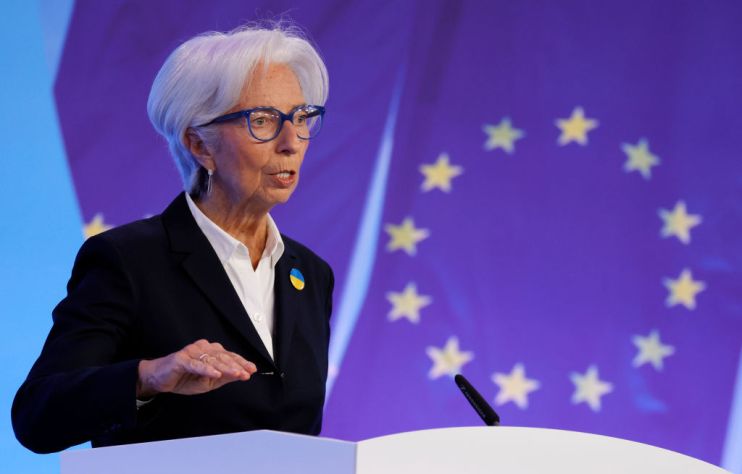Euro inflation falls faster than expected as markets look for clues on interest rate cuts

Inflation across the eurozone fell slightly faster than expected in March but the European Central Bank (ECB) is still likely to wait until June before cutting interest rates.
According to a ‘flash’ estimate from Eurostat, inflation across the bloc fell to 2.4 per cent in March, down from 2.6 per cent in February and below the 2.5 per cent expected by most economists.
Core inflation, which strips out volatile components like food and energy, dipped to 2.9 per cent from 3.1 per cent in February. This is the first time in two years core inflation has been below three per cent.
However, in a sign that inflationary pressures might still prove persistent in some sections of the economy, services inflation remained flat at four per cent.
The figures will be closely scrutinised by traders for any hints about what it might reveal about the future path of interest rates in the bloc.
“With inflation now within spitting distance of the European Central Bank’s two per cent targeted level, investors will be even more convinced that interest rate cuts are on the near-term horizon,” Michael Field, European Market Strategist at Morningstar said.
Interest rates stand at their highest level for 23 years, with the benchmark rate at four per cent.
The ECB left interest rates on hold for the fourth consecutive time at the March meeting, warning that price pressures remain too high “owing to strong growth in wages”.
With important wage data covering the first quarter of this year only being published in May, the central bank is very unlikely to cut interest rates before June – its first meeting after the data is published.
Following the ECB’s decision in March, Christine Lagarde, president of the ECB, said “we will know a little more in April, but we will know a lot more in June”.
Markets are also increasingly confident that the Bank of England will also start cutting interest rates in June as inflation has come in below expectations.
New data on the labour market in the euro area was also published today, showing that unemployment remained at 6.5 per cent in February.
This means unemployment is still at a record low despite the ECB’s rate hikes. Nevertheless, economists argued that this would not prevent an easing in wage growth.
“A still-low unemployment rate doesn’t necessarily mean wage growth will remain at today’s highs,” Melanie Debono, senior Europe economist at Pantheon Macroeconomics noted.
“We think wage growth will come down, in line with the fall in inflation in recent months as workers’ negotiating power diminishes,” Debono continued.